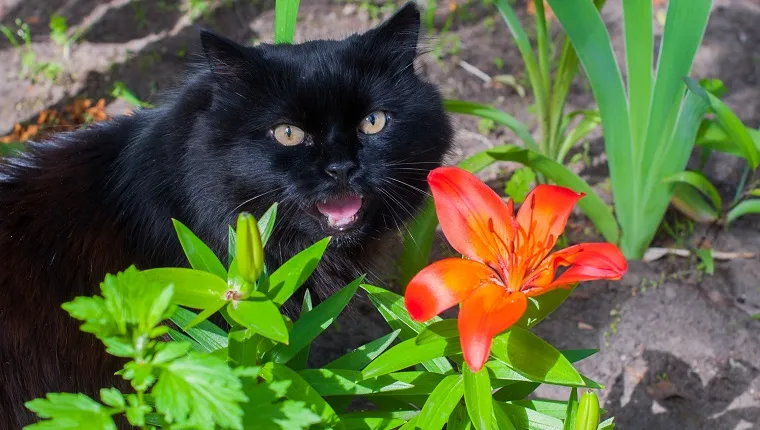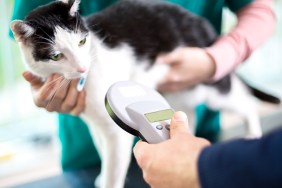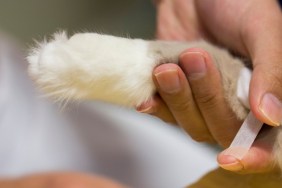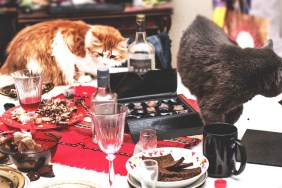March is National Pet Poison Prevention Awareness Month, and it’s a great time to go over some safety tips and prevent accidental poisoning in cats and other animals.
A surprising number of plants can harm your cat. Sometimes they produce mild symptoms like an upset stomach, and sometimes they can cause death.
An Easter Lily, for example, can be fatal for the cat who eats it. In fact, lilies in general are among the most dangerous. Oleanders, azaleas, and yew plants are also extremely toxic.
Households with cats should keep the following list handy. Make sure that plants brought into the home are not on the list, or at least are not accessible to the cat.
Plants That Are Poisonous To Cats
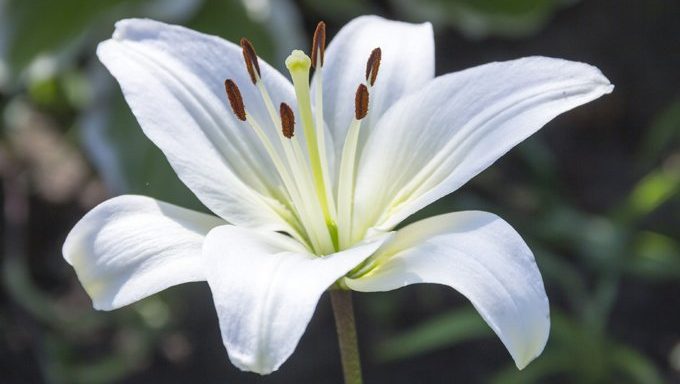
Here is a list of plants that are poisonous to cats according the the ASPCA. They’re in alphabetical order and not necessarily the order of most toxic.
- Aloe Vera
- Amaryllis
- Apple Leaf Croton
- Apricot (pit)
- Asparagus Fern
- Autumn Crocus
- Avacado (fruit and pit)
- Azalea
- Baby’s Breath
- Bird of Paradise
- Bittersweet
- Branching Ivy
- Buckey
- Buddist Pine
- Caladium
- Calla Lily
- Castor Bean
- Ceriman
- Charming Dieffenbachia
- Cherry (seeds and wilting leaves)
- Chinese Evergreen
- Christmas Rose
- Cineraria
- Clematis
- Cordatum
- Corn Plant
- Cornstalk Plant
- Croton
- Cuban Laurel
- Cutleaf Philodendron
- Cycads
- Cyclamen
- Daffodil
- Devil’s Ivy
- Dieffenbachia
- Dracaena Palm
- Dragon Tree
- Dumb Cane
- Easter Lily
- Elaine
- Elephant Ears
- Emerald Feather
- English Ivy
- Fiddle-leaf fig
- Florida Beauty
- Foxglove
- Fruit Salad Plant
- Geranium
- German Ivy
- Giant Dumb Cane
- Glacier Ivy
- Gold Dieffenbachia
- Gold Dust Dracaena
- Golden Pothos
- Hahn’s Self-Branching Ivy
- Heartland Philodendron
- Hurricane Plant
- Indian Rubber Plant
- Janet Craig Dracaena
- Japanese Show Lily
- Jeusalem Cherry
- Kalanchoe
- Lacy Tree Philodendron
- Lily of the Valley
- Madagascar Dragon Tree
- Marble Queen
- Marijuana
- Mexican Breadfruit
- Miniature Croton
- Mistletoe
- Morning Glory
- Mother-in Law’s Tongue
- Narcissus
- Needlepoint Ivy
- Nephytis
- Nightshade
- Oleander
- Onion
- Oriental Lily
- Peace Lily
- Peach (wilting leaves and pits)
- Pencil Cactus
- Plumosa Fern
- Poinsettia (low toxicity)
- Poison Ivy
- Poison Oak
- Pothos
- Precatory Bean
- Primrose
- Red Emerald
- Red Princess
- Red-Margined Dracaena
- Rhododendron
- Ribbon Plant
- Saddle Leaf Philodendron
- Sago Palm
- Satin Pothos
- Schefflera
- Silver Pothos
- Spotted Dumb Cane
- String of Pearls
- Striped Dracaena
- Sweetheart Ivy
- Swiss Cheese Plant
- Taro Vine Tiger Lily
- Tomato Plant
- Tree Philodendron
- Tropic Snow Dieffenbachia
- Weeping Fig
- Yew
How Can You Keep Your Cat Safe?
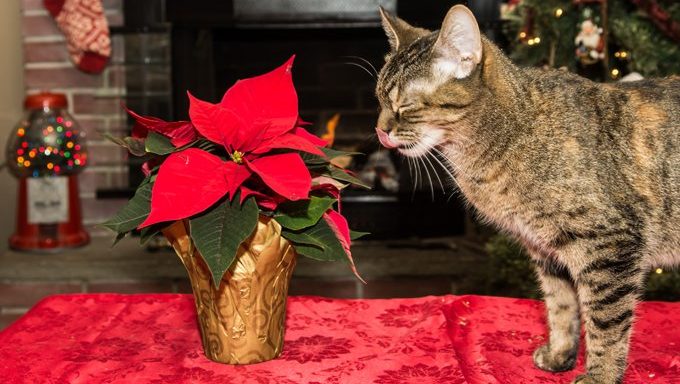
Many people bring in new houseplants around changing seasons and holidays. While these seasonal plants might brighten your home, they also tend to be some of the most toxic to cats.
Remember that if a cat wants something, they often find a way to get it. Keep that in mind when you’re celebrating Easter, Christmas, or any other holiday.
It might be best to leave these plants outside where your indoor cat can’t get to them. Alternatively, a fake plant may not look exactly like the real thing, but it will be far safer for your furry family members.
If your cat is poisoned, you should rush the cat to your vet or an emergency veterinary clinic.
If a vet isn’t available, then you can call the ASPCA’s 24-hour emergency poison hotline at 1-888-426-4435. Be aware that there is a fee, which you can pay by credit card. But if your cat’s life is on the line, it’s worth the cost.
Do you check all plants before bringing them home to your cat? How do you keep your kitty safe from poisonous plants? Let us know in the comments below!
